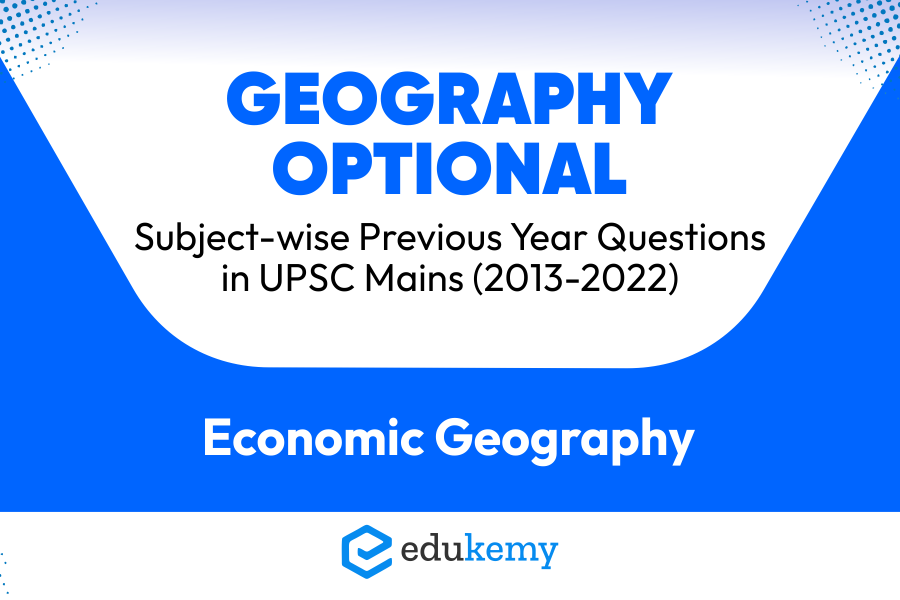Economic geography is a branch of geography that studies the location, distribution, and spatial organization of economic activities and systems. It is concerned with understanding how economic processes and structures shape and are shaped by the physical and human landscapes.
One of the key concepts in economic geography is spatial organization. Economic activities are distributed across space in complex ways, and economic geographers seek to understand how and why different economic activities are located in particular places. They also study how economic activities interact with each other and with other elements of the landscape, such as transportation networks, land use patterns, and natural resources.
Economic geography is also concerned with the relationship between the economy and society. It examines how economic activities are influenced by social factors such as culture, politics, and institutions, and how economic structures in turn influence social dynamics and power relations.
Finally, economic geography is concerned with the relationship between the global and the local. It examines how economic processes are shaped by global forces such as trade, investment, and migration, as well as how these processes are experienced and negotiated at the local level.
Get the Geography Optional Hard Copy Notes of Shabbir Sir’s most recent batch: Here
Economic Geography Previous Year Questions (UPSC CSE Mains Geography Optional)
- “Shifting global trade patterns create new opportunities”. Examine this statement. (10 Marks/2022)
- Automation is rapidly changing the economies of labour and will affect trade patterns in significant ways”. Clarify. (15 Marks/2022)
- Climate change is a serious problem to global food security and poverty eradication Critically examine. (20 Marks/2022)
- Explain in detail the impact of regional disparities on economic development. (15 Marks/2022)
- How is energy transition seen as an instrument for achieving zero carbon by 2050? (10 Marks/2021)
- Protected cultivation assists in healthier and a larger produce. Justify with examples. (10 Marks/2021)
- Describe the role of accessibility and affordability in food security of developing world. (15 Marks/2021)
- Analyse India’s food security in the context of population growth. (10 Marks/2020)
- Identity the causes and effects of energy crisis, and suggest suitable measures to solve the problem. (10 Marks/2020)
- “Land degradation is a threat to productivity and sustainable resource management.” Explain with suitable
examples from India. (15 Marks/2020) - Analyse the dynamics of industrial location in the metropolitan cities of India. (15 Marks/2020)
- “A large-scale global shift in manufacturing is the outcome of deindustrialization in the developed world matched by industrialization in the developing world.” Analyse this statement. (15 Marks/2019)
- Distinguish between ‘isodapanes’ and ‘isotims’. Critically examine the leeast cost theory of industrial location given by AlfredWeber. (20 Marks/2019)
- Define stunting and wasting. Why are these more prevalent among children in developing countries? (10 Marks/2019)
- Discuss the degree of importance of transportation costs as a factor of industrial location with respect to “footloose industries”. (10 Marks/2018)
- “Famine is a social phenomenon rooted in institutional and political economic arrangements, which determine access to food by different classes and strata.” Comment. (20 Marks/2018)
- Discuss in brief the main thesis in “Limits to Growth” (1972) and also provide a critique of the same. (15 Marks/2018)
- “Whittlesey’s agricultural regions are relevant even today.” Discuss. (10 Marks/2017)
- “The intensity of energy crisis varies regionally.” Explain. (15 Marks/2017)
- “Linkages between resource-endowed regions and resource- utilizing regions determine the pattern of international trade.” Elaborate with suitable examples. (15 Marks/2016)
- “Energy mix is a step towards sustainability.” Discuss. (10 Marks/2015)
- “Man- induced famines are becoming more common than nature-induced one.” Comment. (15 Marks/2015)
- Give an account of food security issues in developing countries. (10 Marks/2014)
- Explain the relevance of bottom- up and top- down approaches in the development of agrarian economy. (10 Marks/2014)
- Discuss environmental and economic problems associated with coal production. (15 Marks/2014)
- “World is passing through a global resource dilemma.” Comment. (15 Marks/2014)
- “Food productivity with purity of ecosystem is the need of the hour.” Elaborate. (15 Marks/2014)
- Role of Venezuela in the production and export of oil. (10 Marks/2013)
- Countries most effected in case of shut down of Nuclear power. (10 Marks/2013)
- Discuss the changing pattern of production and export of Coffee in the world. (10 Marks/2013)
- Analyse the reasons for a comparatively poorer development of fishing grounds in tropical areas. (15 Marks/2013)
- Analyse the causes for changes in the pattern of world trade. (25 Marks/2013)
Frequently Asked Questions (FAQs)
Q: What are the key topics covered in Economic Geography for UPSC Mains as per the previous year questions (2013-2022)?
In the past years, the UPSC Mains examination has consistently focused on various aspects of Economic Geography. Key topics include globalization, regional development, agricultural geography, industrial location, trade patterns, and the impact of economic policies on geographical regions. Aspirants should pay special attention to these areas while preparing for Economic Geography.
Q: How has the weightage of Economic Geography questions evolved over the years in UPSC Mains (2013-2022)?
Understanding the changing trend in question distribution is crucial for effective preparation. Analyzing the past decade’s papers reveals fluctuations in the emphasis on certain themes within Economic Geography. Aspirants should be aware of these variations to tailor their study plans accordingly.
Q: Can you provide insights into the types of questions asked in the Economic Geography section of UPSC Mains?
The UPSC frequently poses a mix of theoretical, analytical, and application-based questions in the Economic Geography section. Questions may require candidates to analyze economic policies, evaluate regional disparities, and propose solutions for sustainable development. Aspirants should be adept at linking theoretical concepts with real-world scenarios.
Q: Are there any specific case studies or examples that aspirants should focus on for Economic Geography in UPSC Mains?
Case studies and examples play a pivotal role in answering questions effectively. Aspirants should be well-versed in illustrating their responses with relevant and contemporary case studies. Understanding the economic geography of specific regions and countries can enhance the depth and quality of responses.
Q: How should candidates integrate current affairs with Economic Geography preparation for UPSC Mains?
Economic Geography is closely linked to current economic and geopolitical developments. Aspirants must stay updated on global and national economic trends, trade agreements, and regional disparities. Integrating current affairs into their preparation will not only enhance their understanding but also help in providing context and relevance to their answers during the examination.

For UPSC Prelims Resources, Click here
For Daily Updates and Study Material:
Join our Telegram Channel – Edukemy for IAS
- 1. Learn through Videos – here
- 2. Be Exam Ready by Practicing Daily MCQs – here
- 3. Daily Newsletter – Get all your Current Affairs Covered – here
- 4. Mains Answer Writing Practice – here
Visit our YouTube Channel – here


